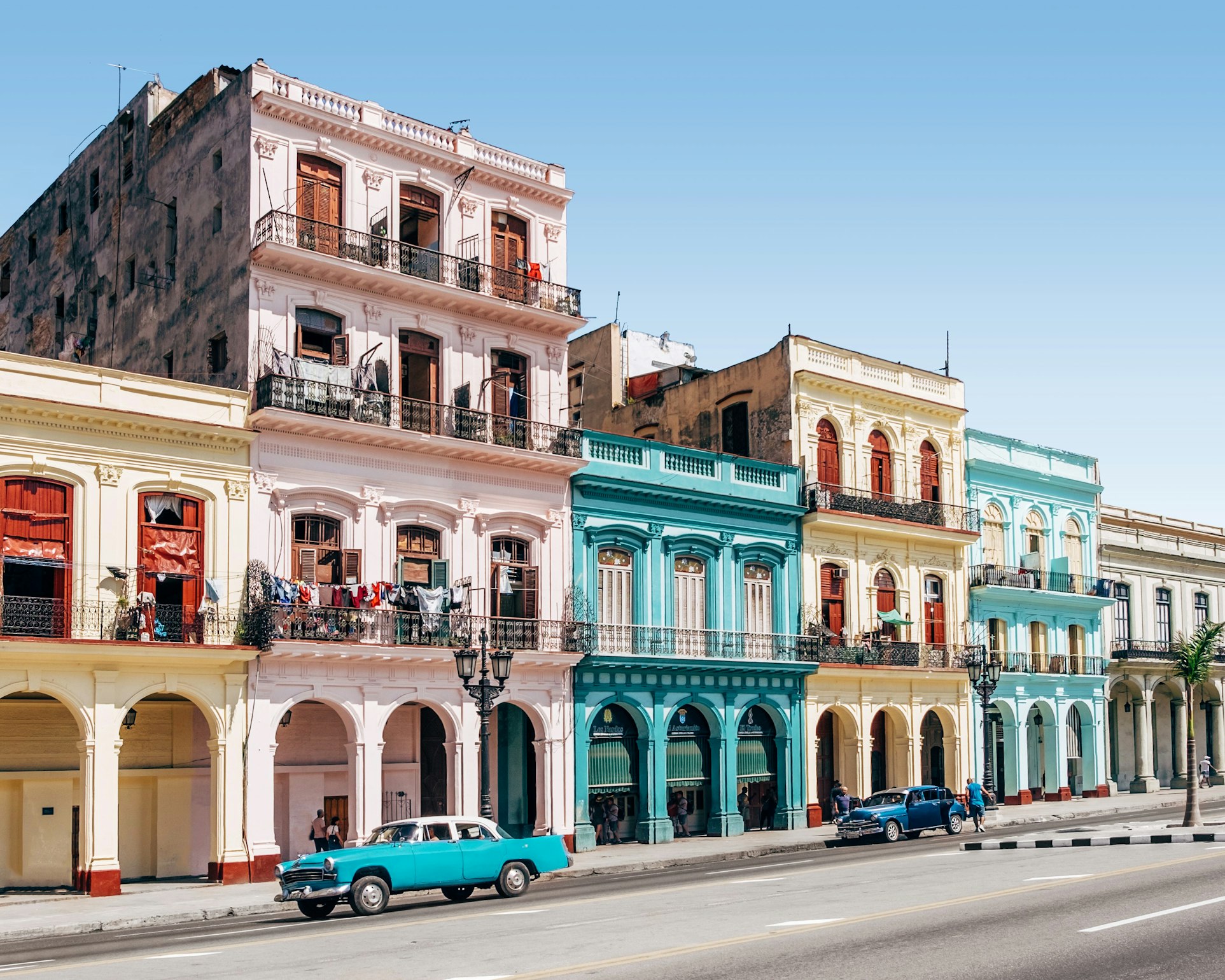Havana

Havana, the vibrant capital of Cuba, is a city suspended in time, where history, culture, and music intermingle against a backdrop of colonial architecture, vintage cars, and picturesque streets. As the largest city in Cuba, Havana is both the political and cultural heart of the country, offering visitors a unique glimpse into its revolutionary past, rich artistic traditions, and the resilient spirit of its people.
One of Havana’s most distinctive features is its stunning colonial architecture, which can be found throughout the city but is most prominently displayed in Old Havana (Habana Vieja). This UNESCO World Heritage site is a treasure trove of historic buildings, plazas, and cobblestone streets, where the past seems to echo in every corner. Notable landmarks include the Cathedral of Havana, the Castillo de la Real Fuerza, and the vibrant Plaza de Armas, surrounded by museums, baroque churches, and grandiose buildings that tell the story of Havana’s colonial and revolutionary history.
The Malecón, Havana’s famous seaside promenade, stretches along the city’s northern coast, offering breathtaking views of the Gulf of Mexico. It’s a popular gathering place for locals and tourists alike, especially at sunset when the city comes alive with music and dance. The Malecón embodies the city’s connection to the sea and its role as a beloved communal space where the vibrancy of Cuban culture is on full display.
Havana’s rich cultural tapestry is further woven through its music and arts scene. The city is considered the birthplace of classic Cuban genres such as son, salsa, and mambo, and its streets and squares pulse with the rhythms of live music. Venues like the Casa de la Musica and the legendary Tropicana club offer unforgettable experiences of Cuba’s musical heritage, showcasing the talent and passion of Cuban musicians and dancers.
Art is another vital aspect of Havana’s cultural identity, with numerous galleries, studios, and cultural institutions spread throughout the city. The Museo Nacional de Bellas Artes and the Fábrica de Arte Cubano are just two examples of spaces where visitors can explore the works of Cuban artists, from colonial times to the present day, reflecting the nation’s complex history and vibrant contemporary art scene.
Cuban cuisine, a fusion of Spanish, African, and Caribbean influences, is an integral part of Havana’s allure. Traditional dishes such as ropa vieja (shredded beef), arroz con frijoles (rice and beans), and the ubiquitous Cuban sandwich can be savored in the city’s paladares (private family-run restaurants) and state-run eateries, offering a taste of the island’s culinary diversity.
Despite the challenges faced by its residents, Havana remains a city of indefatigable spirit and warm hospitality. Its streets are alive with the energy of its people, who are proud of their heritage and eager to share it with the world. The city’s resilience is evident in its thriving community projects, grassroots art movements, and the palpable sense of solidarity among Habaneros.
In conclusion, Havana is not just a city to visit but an experience to be lived. It invites travelers to step into a world where time moves differently, where history and modernity coexist, and where the spirit of Cuba is expressed in every dance step, brush stroke, and melody. Havana is a city that captures the heart and imagination, leaving a lasting impression on all who wander its colorful streets.